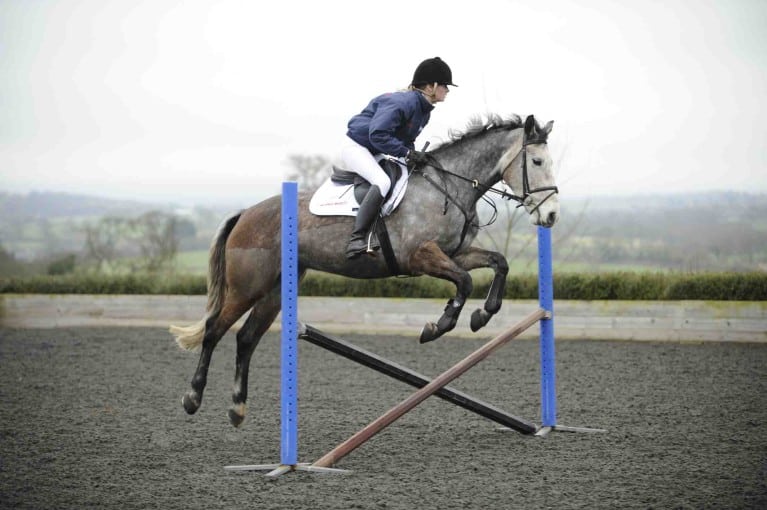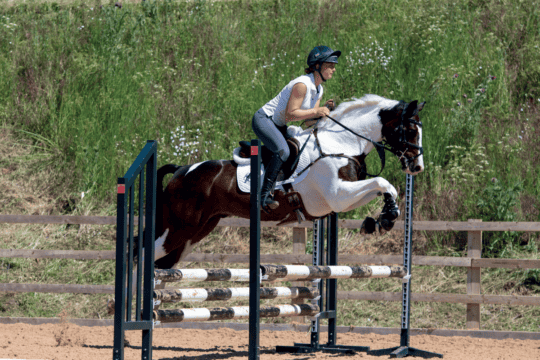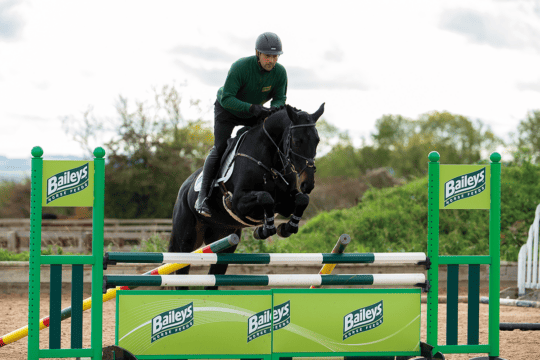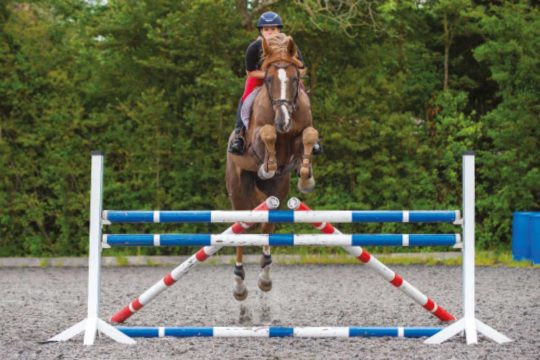-
Riding Schooling and Training
-
Health and Veterinary
-
Management
-
Mind Matters
-
Buying and Selling
-
Insurance Advice
FAQs
Show jumper Mark Finn offers expert advice to help you take your showjumping training to the next level with exercises to get you warmed up, working over related distances and ready for water!

 About Mark
About Mark
Mark represented Ireland in three-day eventing, but from an early age his real passion was showjumping. Part of the British Show Jumping Association/UKCC Coaching accreditation, Mark trains riders from the 70cm beginnings to the pinnacle of winning international medals.
He tells us: “With the right horse and simple, clear coaching methods, it is within everyone’s capabilities to achieve their goals.”
 Our models
Our models
Zoe owns Rameira (Mia), a six-year-old Hanoverian mare. They are currently jumping in Foxhunter and six-year-old classes. Zoe describes Mia as: “A really straightforward mare. She is so easy, never stops at fences, and she’s always the same to ride.”
Zoe warmed Mia up in the same way as Mark likes all his pupils to, which is long and low, and on a loose rein, with the rider in a cross-country position.
“It’s not fair to get on and start nagging straightaway, and you’ll have a much more level-headed horse if you give her time to relax and warm up properly,” he explained.
“As you move up the levels, it is even more important to make shortening and lengthening the stride a big part of your warm-up, because the courses really start to test this, as you’ll find out later.”
Once Zoe had taken up more of a contact, Mark asked her to ride Mia more towards a medium canter for six or seven strides, before bringing her back to a more collected canter. “Do this several times on both reins until you feel she is listening to you. If your horse doesn’t yet find adjusting the canter particularly easy, practice is the only way to perfect it.”
 Simple fences
Simple fences
Zoe trains with Mark regularly and once they have finished warming up on the flat, Mark usually continues the warm-up over some simple fences.
“Today, I’m going to start with a simple cross-pole, jumped from both directions. Then Zoe can jump the same cross-pole, turn left to a vertical and then right to another vertical.
 This is quite an easy exercise – all you have to do is get a good stride to each fence, rather than thinking about specific distances between the fences,” he added.
This is quite an easy exercise – all you have to do is get a good stride to each fence, rather than thinking about specific distances between the fences,” he added.
Successfully over these fences, the pair moved on to a trickier part of the warm-up, in order to get Mia’s full attention.
“Now jump through this one-stride double and turn left-handed to a two-stride double,” Mark said.
“Once doubles are involved, the horse has to start thinking about more than one fence at a time, so the brain power really starts to kick in.”
 Related distances
Related distances
Mark believes jumping is a partnership, and a lot of your success depends on how well you know your horse. While you might get away with this to a certain extent at the lower levels, you would be very lucky to at the higher levels, as the fences get bigger and the decisions riders have to make on course trickier.
“At Zoe’s level, the course builders are really testing the rider’s ability, as well as the rideability of the horse,” he said.
“For example, a common challenge in Foxhunter classes is a related distance on a curve. This could be ridden on different numbers of strides, depending on many factors – eg, your horse’s stride length or whether you choose to jump the fences to the inside or the outside when saving time in a jump-off.”
Mark set up a related distance on a curve where it was possible to ride either four or five strides in between. He asked Zoe to ride four strides first time, jumping both fences on the inside, then to come around again and jump it in five, jumping on the outside.
“What you do in the ring really depends on your horse,” said Mark, “which is why it is so important to practise at home, so you can find out what suits him best.”
 Back and forth
Back and forth
To build on the exercise above, Mark added a third fence into the equation. Now the three fences consisted of planks, either four or five strides to an oxer, then either four or five strides to an upright. Once again, you choose to jump either on the inside or the outside, depending on how many strides you are aiming for.
“When you’re starting an exercise like this, it is easier to ride five strides first then four strides between the second and the third part,” Mark explained.
“Jumping it the other way (four then five) means the horse lengthens his stride first, then you need to get him back to go for the five shorter ones, which is much harder. And that’s how course builders really test both of you, and how well your horse can adjust his stride.”
The ultimate test of this, which you have probably seen on TV numerous times, is a water jump. The rider has to approach almost at a gallop to clear it, followed by an upright, where the horse needs to be really collected in order to make the height.
In a nutshell
Here’s what you need to know to build the fences explained in this feature…
Horses will take off two yards (1.83m) away from a fence and land two yards after it.
A canter stride is four yards (3.66m), so for a one-stride double, you would allow for one canter stride, plus take-off and landing, making the total eight yards (7.3m).
For the four/five strides on a curve, from inside to inside of the fences you’d allow 16 yards (14.6m) plus take-off and landing, totalling 20 yards (18.3m), therefore 24 yards (22m) from outside to outside.
Our rosette symbols highlight expert riding advice of various levels
















